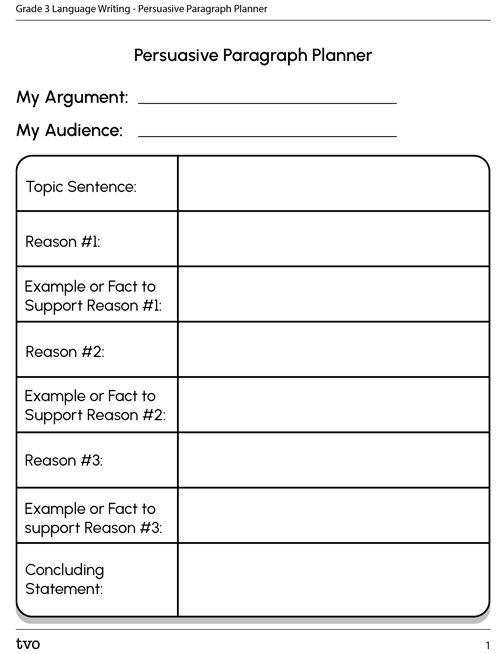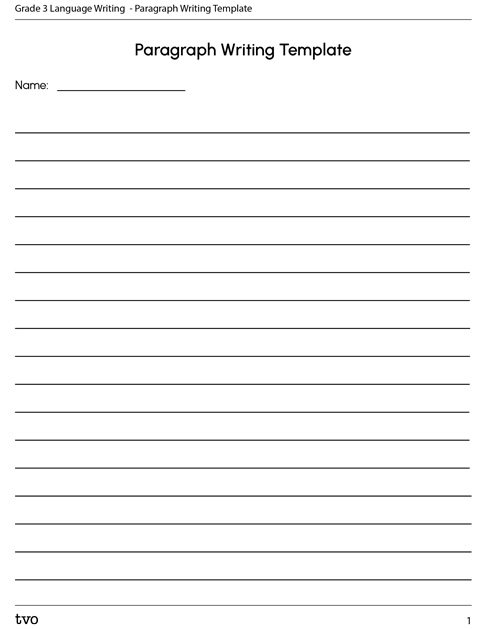Minds On
What is persuasive writing?

Think of a time when you tried to convince someone to change their mind. What was your argument? What are some of the ways that you tried to persuade them? Were you successful?
Persuasive writing is a form of writing with the purpose of trying to influence someone’s opinion on an issue.
Action
Brainstorming and planning
Brainstorm
Brainstorming
There are many issues that we care about where we may want to influence the opinion of other people. Let’s begin by brainstorming issues that are important to you, who’s opinion you want to influence (your audience), and at least one reason to support your argument.
Complete the Brainstorming Template in your notebook or use the following fillable and printable document to help you list issues that you care about.
| My Argument | My Audience | One Reason to Support My Argument |
|---|---|---|
| Example: People should stop smoking | People who smoke | Smoking is not good for your health |
Press the ‘Activity’ button to access the Brainstorming Template.
Student Tips
Hamburger paragraph
Check out the video below to review the hamburger paragraph. Your persuasive paragraph will follow a similar structure.
Examine the effective persuasive strategies for other ideas to make your argument even stronger! Thinking about the video you just saw about the Hamburger paragraph, use the "effective persuasive strategies" ideas to decide how strong or convincing this paragraph is.
Getting organized
You may have a burning desire to write a persuasive paragraph on each of your topics, but for now, choose the argument you care most about and can support with many reasons.
Once you have chosen your argument, think of reasons why others should support your argument. Access this short video on writing a paragraph with supporting details to understand how facts and examples can help strengthen your argument.
Take some time to research your topic for facts and examples to strengthen your argument. Use the Persuasive Paragraph Planner in your notebook or use the following fillable and printable document to organize your ideas.

Press the Activity button to access the Persuasive Paragraph Planner.
Activity (Open PDF in a new tab)Consolidation
Drafting, revising, and publishing
Now that you have made a plan, you are ready to begin drafting your persuasive paragraph. As you write, you may come up with other ideas to make your argument even stronger. The drafting stage is a great time to add those new ideas.
Self and peer-editing
Writers read their writing over and over to make it even stronger. Have you completed your draft? If so, take the time to find places in your work where you can make your writing even more persuasive. Once you have completed your self-edit, if possible, ask a partner and have them help you with a peer edit.
Use the Editing Checklist in your notebook or use the following fillable and printable document to guide your revision process.
Publishing your work
What a lot of work you have put into your writing! You are now ready to publish your work. Even at this stage, you may still come up with a better word or a new idea. It’s not too late to add those in. In fact, every time you reread your work, you may find another place to make it even better – that is what good writers do!
Use the Paragraph Writing Template in your notebook or use the following fillable and printable document to copy your paragraph, with all the revisions for a final draft.

Press the Activity button to access the Paragraph Writing Template.
Activity (Open PDF in a new tab)
With all of your heavy lifting behind you, you are ready to get out there and persuade someone to change their opinion! Best of luck!
Reflection
How do you feel about what you have learned in this activity? Which of the next four sentences best matches how you are feeling about your learning? Press the button that is beside this sentence.
I feel...
Now, record your ideas about your feelings using a voice recorder, speech-to-text, or writing tool.
